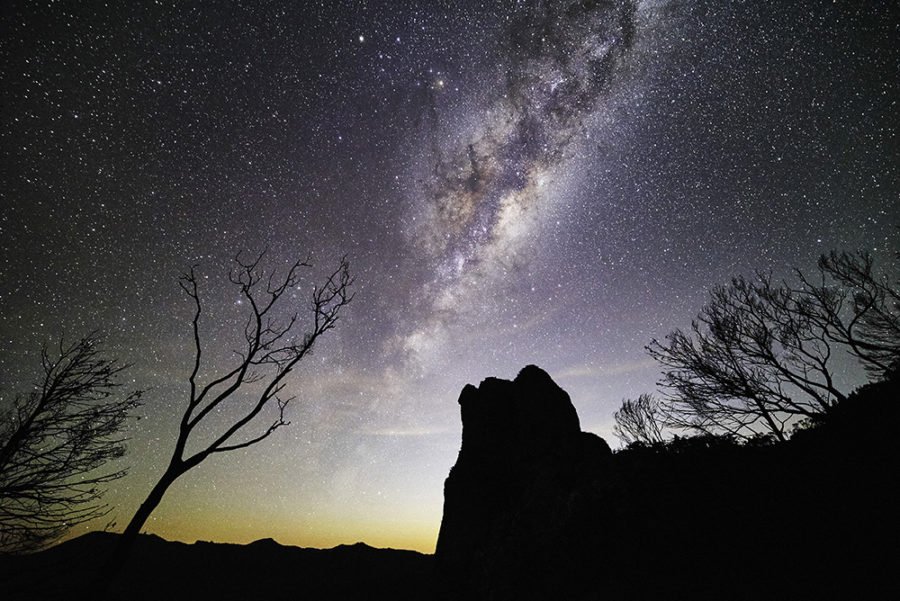Shoot for the stars

MILKY WAY PHOTOGRAPHY is extremely fun and can produce spectacular images. Below are some tips to help you take the best Milky Way images you can.
1. Location: Find an area with minimal light pollution, generally far from a big city.
2. Timing: The Milky Way is at its brightest around the time of the new Moon, during the middle of the year. Try an app or program such as Stellarium or Photopills to plan your shoot according to the position of the Milky Way on a particular day.
3. Weather: A clear night is best because there will be no clouds to obscure the stars.
4. Stability: Because the shutter of the camera will be open for a long time during the exposure, use a sturdy tripod and a shutter remote to avoid camera movement. The self-timer works too if you don’t own a shutter remote.
5. Lens: Wide-angle lenses are generally best because they allow for longer exposure times before star trailing can be seen. They also fit more of the sky in the frame.
6. Camera: Use manual mode to control shutter speeds and aperture.

Luke Tscharke‘s star-filled image of a Tor in Kosciuszko National Park was featured on our AG#126 cover.
7. Exposure time: If the shutter is open too long the stars start to become blurry due to the Earth’s movement. Begin with an exposure time of 30 seconds and reduce that if required until you get the best results.
8. ISO: Choose the maximum ISO value offering images with an acceptable level of noise. This is generally in the range of ISO 1600–3200.
9. Aperture: Choose the widest possible aperture (lowest F-stop value) to allow as much light to enter the camera as possible. This is generally between F/2.8 and F/4, depending on the lens.
10. Focus: Focusing can be difficult in the dark; essentially the focus should be set at infinity. This can be done by selecting ‘infinity’ on the focus scale of the lens, or sometimes focusing on the Moon or a bright object far in the distance. Trial and error may be required to get it right; don’t forget to review your images after they are captured to confirm they are in focus.
This originally appeared in AG#128.
RELATED CONTENT:
- Photo tips: How to shoot the Moon
- Night sky photos: a selection of the best reader images
- Taking back the night sky
- Stunning star trail photography
- Best Aussie astronomy photos

